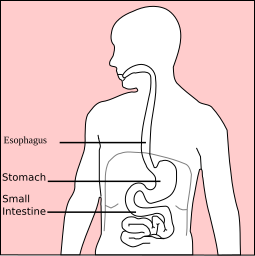
An antroduodenal manometry is a procedure used to measure stomach and duodenal motility to assess proper functioning of the stomach and small intestine. During this procedure, a thin, flexible, plastic tube is inserted through the nose where it passes down through the throat to the stomach and small intestine. The tube has holes that measure pressure at different locations in the stomach and small intestine. The measurement is usually taken over the course of 6 hours. What is it? The antroduodenal manometry is a test used to measure the pressure of the pylorus(the lower part of the stomach) and the duodenum (the beginning of the small intestines). The pylorus and the duodenum are connected by the pyloric sphincter. When the muscles around the pyloric region and duodenum are not functioning properly,constipation, nausea, abdominal pain, diarrhea and other symptoms can occur.These symptoms can be attributed to the fact that there is a slowing of gastrointestinal motility(the ability to move food through the body).The antroduodenal manometry measures the muscle contractions of the antroduodenal area,identifying any abnormalities in coordination and muscle strength. |
| What should I do to prepare?
When preparing for an antroduodenal manometry,it is important for the patient to have a conversation with the doctor about any medications they are currently taking,especially blood thinners. Most patients receiving an antroduodenal manometry are advised to stop taking aspirin during the week prior to the test in order to help the blood clotting process. Finally, it is very important for the patient to fast before the procedure. Failure to do so may obstruct the view the doctor has of the patient’s stomach, making it easier for the doctor to miss an important abnormality. It is common for the doctor to request that the patient refrain from eating during the night before the procedure.A patient should also adjust his or her diet altered in the weeks approaching the procedure. Switching to a diet rich in protein may be recommended. |
| What happens during the process?
Initially, the patient receives sedatives through IV lines. A plastic tube is then inserted through the nose where it passes down through the throat to the stomach and small intestine. Once the tube is placed properly,the doctor will allow time for the patient to relax and become accustomed to having the tube placed in their nose. The reason for this is that stress can cause the muscles to act abnormally. Once the patient is used to the treatment,the doctor will begin to filter water into the tube. The water will pass through the holes placed along the tube. As the water is passing through the hole,it measures patient will be conscious during the procedure. Patients do not feel any discomfort and can eat during the procedure when the doctor says he or she can. The patient is able to relax, watch television or spend time with visitors for the majority of this procedure. |
| What are the risks and potential complications?
Some of the associated risks and complications include, but are not limited to reaction to the sedatives, losing the IV connection, and lack of cooperation with a doctor (i.e. a child is misbehaving). Disclaimer: All GlobeHealer Site content, including graphics, images, logos, and text, among other materials on the site are for educational purposes only. This content is not intended to be a substitute for professional medical advice, and you should always contact your physician or qualified health provider for information regarding your health. Information on this site regarding the overview, diagnosis, and treatment of any kind should be looked at,in addition to the advice and information of your health care professional. Do not disregard medical advice or delay seeking treatment or medical advice due to information found on the GlobeHealer site. If there is even the possibility that you may have a medical emergency, seek treatment, call your doctor, or call your local emergency telephone number immediately. GlobeHealer does not endorse being the first line of communication in case of emergency and does not endorse any specific test, physician, facility, product, procedure, opinion, or other information that is or may be mentioned on this site or affiliated entities. Reliance of any and all information provided by GlobeHealer, its employees, affiliations, others appearing on the Site under the invitation of GlobeHealer, or visitors of the site is solely at your own risk and is not the responsibility of GlobeHealer. Image Source: https://commons.wikimedia.org/wiki/File:Stomach_diagram.svg
|
